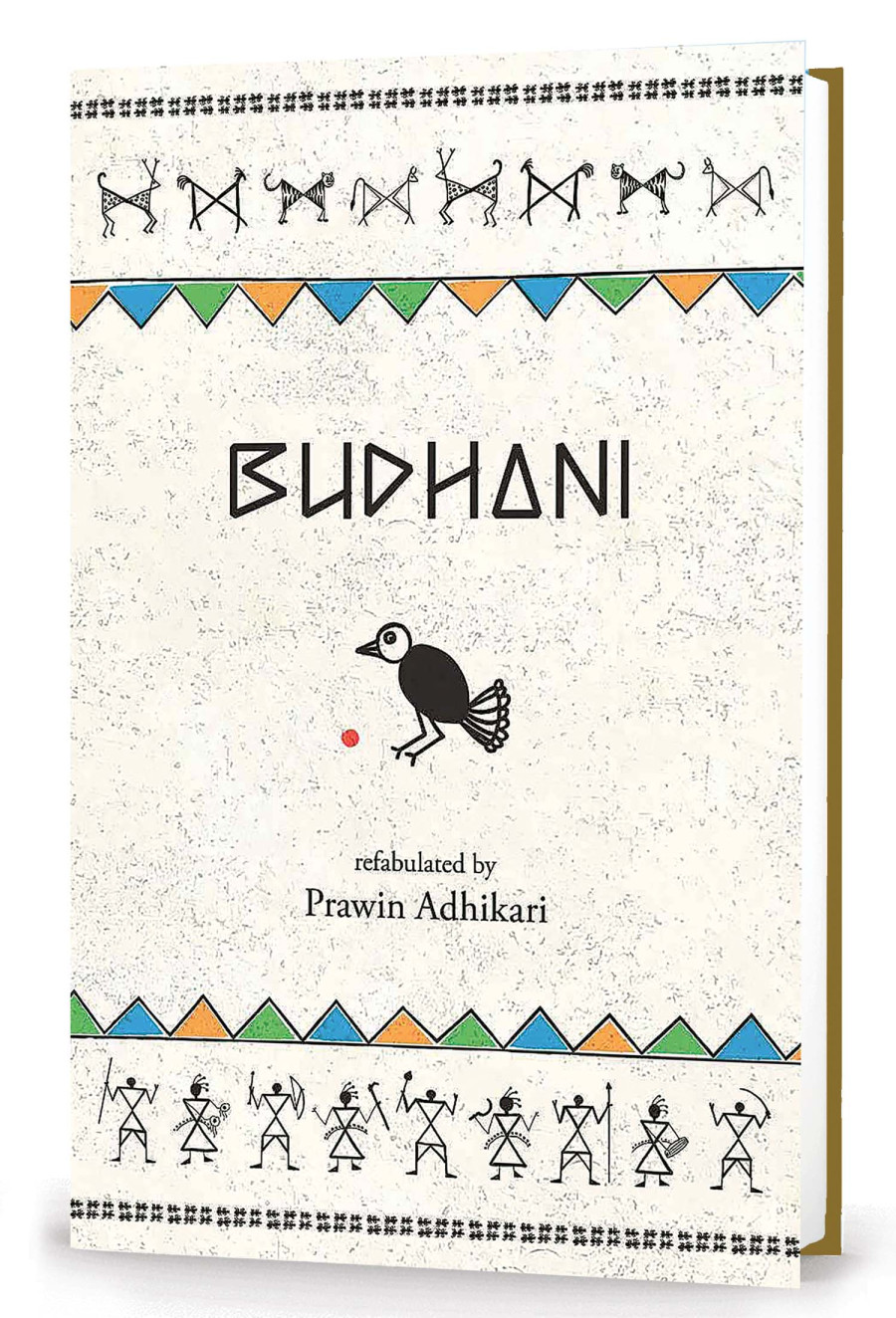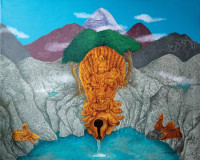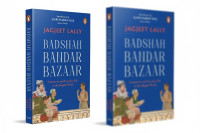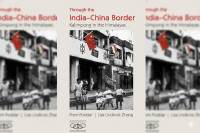Books
Triumphs of a talking crow
Prawin Adhikari’s ‘Budhani’, a retelling of an age-old Tharu folktale, is more than just another fable where wisdom wins over the wicked.
Deepali Shrestha
While there were some wonderful segments in the book launch of ‘Budhani’ at the Bakery Cafe in Pulchowk, which offers just the right space and energy for such events, the showstopper was an unexpected guest. As Prawin Adhikari, the writer behind the refabulation of ‘Budhani’, read aloud his speech, the cheeky little crow from the book’s cover had sprung to life and perched clumsily on the wall behind him. I tried to stay focused on Adhikari’s words but kept marvelling at the little crow hopping along the wall.
Sure, I have seen many crows in my life, but after reading ‘Budhani’, every encounter with the clever bird has felt oddly delightful.
Prawin Adhikari’s new book, ‘Budhani’, is charming, witty and perceptive. The story is, in fact, Adhikari’s reimagining and retelling of age-old Tharu folktales that have had various iterations throughout the years.
It was during a school visit in Dang with the Book Bus that he first had the inkling to write 'Budhani', after watching a play by Anup Baral in which a crow who had been wronged seeks justice from the king. It took him some time playing around with the story during the Covid-19 lockdowns before he landed on the version he wanted to tell.
In the book’s first part, we are drawn into the adventures of a little crow named Budhani in the lush jungles by the Rapti River. Every creature of the jungle, big or small, follows nature’s unspoken rules, living in harmony under the vigilant gaze of father tiger.
From the moment she hatches as a crow chick, our journey into the jungle begins through Budhani’s eyes. Even before she grows into a fine crow with glossy feathers, we, as readers, already know that our protagonist is unlike any other. Among her brothers and sisters, she is the mighty one, the first to fly and feel the freedom in the air beneath her wings.
At the launch, Urmila Chaudhary, a human rights activist, expressed her admiration for Adhikari’s honest and inspiring portrayal of a young girl’s spirit—and rightfully so. Budhani is a character many young girls can or would want to relate to: strong-willed, strikingly self-aware, yet riddled with confusion and self-doubt. “She was herself only when she flew with her eyes closed…Everywhere else, she was made into shapes imagined by others, cut down to their size, sculpted to fit their expectations,” reads a few lines from the book.
Perhaps the most enjoyable part of the book is its immersive world-building, enriched by the extensive knowledge and keen observation about the know-hows of the animal world that the writer brings to his writing. Even as he occasionally strays from the main events to linger on the surroundings, the vivid descriptions sucks you into the magical world of the jungle, where various lives thrive simultaneously. You can almost hear the hiss of the venomous snake lurking near Budhani’s chicks, the distant roar of father tiger echoing through the jungle and feel the swift changes of seasons—from the parched winter to the thunderous monsoon rains, to the oppressive heat of the dense forest—within just a few lines.
Adhikari is also brilliant at anthropomorphising the crow and other wondrous creatures of the forest in his writing to the point that you naturally internalise the story’s fantastical elements. He pours so much love and care into crafting his characters that we truly feel the emotions the character goes through in their journey. I felt all the jitters and butterflies in my tummy the moment Korvin appeared as the charming, mischievous young crow who made the fiercely independent Budhani let down her guard and long for companionship and love. However, her agony and grief washed over me, and I found myself despising Korvin when he broke her heart and branded her a ‘Murdering dam’ after the drought took their chicks. The keen-eyed writer also takes us into the rabbit hole of existentialism through Budhani, who, like many of us, feels purposeless and stuck in the relentless cycle of everyday life. “From this moment to the next, from the day into the morrow, the animal need chased her, grow, survive, feed, fly!”
In the book’s second part, Budhani takes the human form of a girl. However, her fearless spirit remains undiminished, perhaps even more resolute as she carries the wounds of betrayal from her lover and the bitterness of a world that wronged her in her life as a crow. What we witness in this half is Budhani’s healing, as Adhikari breathes new life into the crow who suffered a tragic fate, empowering her to confront the world and seek redemption for all who have suffered—and continue to suffer.
There are also tender moments as Budhani settles into her slow, agrarian life, basking in the love and care of her new parents or sharing long, meandering walks through the villages and jungle alongside Chand, a calf who becomes her kindred spirit. However, this serenity seems fleeting, like a calm before the storm about to overturn her life and summon her inner resolve. Indeed, she goes through several trials and tribulations, which lay bare the conflict not just between humans and nature, but also within human nature.
Towards the end, when Budhani asks father tiger about the greed of man, to which he replies, “Man is greedy twice… Man takes a thing not only to satisfy his own hunger, but also to show others how they are the unequal, the little…” Not only is nature ravaged by human hands, but so are the lives of indigenous communities like Budhani’s, who have nurtured forests, rivers, and lands for years and relied on nature’s reciprocity for survival. Woven into the book’s tragedies is a deeper commentary on the lives of Tharu and other Indigenous women who not only suffer the oppression of the state but also the wrath of patriarchy in their homes and communities.
While ‘Budhani’ unfolds in a world of talking crows and snakes, evil kings who relish tormenting the weak and the chosen ones destined to be the heroes, it is more than just a fable where wisdom wins over the wicked. It is, at its heart, a coming-of-age story of the evolution of a young crow from the moment she is pushed out of her birth nest into the vast and daunting world. Along the way, she struggles to find her footing, endures the weight of survival in the brutal animal kingdom, experiences the joy of love and the ache of betrayal and ultimately grows into a girl with clarity and conviction.
‘Budhani’ does end on a happy note, like every fable with lessons to impart, yet it feels as though the story doesn’t end there. Before the finale, father tiger delivers a grim prophecy to Budhani about how the city man’s greed will swallow the quiet life of the village, how villagers will be trapped in a future not of their choosing and all the creatures will be hunted and caged. This foreboding stays with us after the story ends, urging us to introspect on the troubled world we live in.
‘Budhani’ gave me a sense of enchantment and wonder I hadn’t experienced since reading Rudyard Kipling’s ‘The Jungle Book’ in middle school. However, this time, the adventures of a girl crow and a Tharu girl touched me at a deeper, more personal level. For readers like myself who can’t read the Tharu language, Adhikari’s ‘Budhani’ in English will leave you wanting to read Indu Tharu’s retelling of the story in Tharu, which I heard, is also adorned with some wonderful songs familiar to the Tharu community.
Budhani
Authors: Prawin Adhikari (English edition), Indu Tharu (Tharu edition)
Publisher: Safu, an imprint of Quixote’s Cove
Year: 2025
Pages: 165




 9.12°C Kathmandu
9.12°C Kathmandu.jpg)











